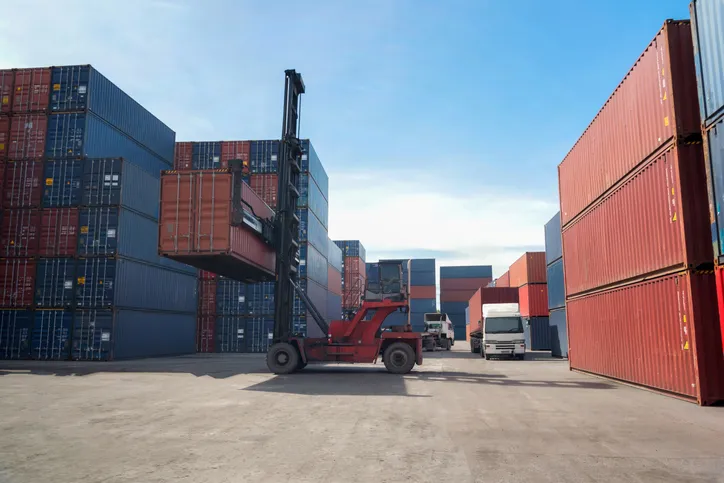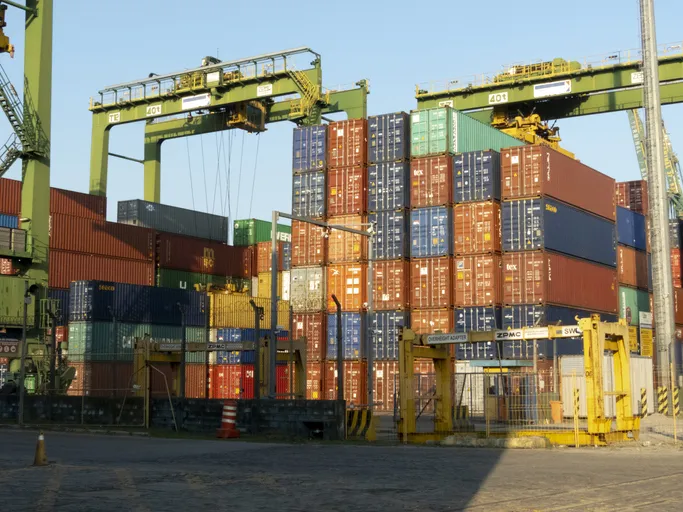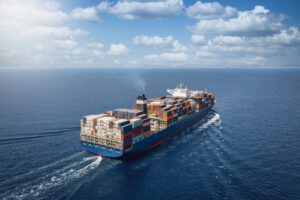Have you ever heard of VGM? Are you aware of what it means regarding Foreign Trade and International Logistics? Before any loaded container enters a vessel, the sender shall inform the VGM (Verified Gross Mass) to the shipper. VGM is the total weight combined of all the cargo inside a container. That includes packing material, the stowage and the tare of the container.
The obligation to inform the VGM of a container is enforced since July 2016. It is intended to increase safety and to improve stability for vessels. Besides, it avoids the collapse of piled up containers. The implementation of this rule has helped improve safety for all ships at sea. Both the crew and the port personnel can benefit from this new procedure.

Inaccurate declarations regarding the weight have already resulted in many accidents and then such fact has compromised the container maritime transportation and put at risk many lives. Therefore, precise declarations regarding the weight are fundamental to avoid harmful outcomes.
Who informs the VGM?
The sender, whose name is mentioned in the Bill of Lading, is responsible for informing the VGM to the packed container. This information is sent to the vessel and terminals as scheduled by the shipper (not more than 3 days before the vessel is berthed). The VGM is not included in the Bill of Lading and then only the gross weight of the cargo is separately declared in the Bill of Lading.
It is a violation against SOLAS (Safety of Life at Sea) International Convention to carry, in a vessel, a packed container whose VGM has not been declared. In case the VGM of the containers is not declared, the cargo might be canceled, and it is a potential loss for the shipper. Some shipowners accept this document when expired and charge a special fee called “Late VGM”.
What happens if a container has no VGM?
The container without VGM shall probably be rejected in port terminals that follow this policy: “NO VGM – NO GATE IN”. Besides, additional costs will be charged by the time spent out of the terminal waiting for the information. In case the VGM is not sent or fails to meet the deadline, each container shall pay for additional fees. Penalties might be applicable by the rightful authorities which supervise SOLAS. Since the size of the container transports are getting bigger and bigger, there is a higher risk to the safety of the cargo transportation.
Read the benefits of hiring a cargo insurance here.
So, it is extremely important to plan accurate stocking and to keep all the stability criteria in compliance with the limits permitted for a safe trip. Any mistake in the calculation or any misinterpretation of data during the stowage planning might cause accidents. And then, VGM precise declaration becomes crucial and effective in order to mitigate such risks.
VGM Methods to obtain VGM
Method 1:
This method implies that the weight of the container be packed/sealed together with the content of the cargo. A certified weighbridge equipment, with the right calibration, is used. If the container is weighed together with the truck on which it is loaded, the weight of the truck and the fuel must be removed from the total weight.
Method 2:
Such method demands that all the cargo items and the content of the container be weighed. That includes the individual weight of the packing material, safety equipment and pallets. The addition of these weights to the container tare must be considered according to what is seen in the CSC plate. In Method 2, all the 4 elements to be determined in order to obtain the VGM are as follows:
1 – The tare weight of the container
2 – The product weight without any packing
3 – The primary mass packing (if any)
4 – The mass of the other packings, pallets, dunnage, space fillers and fixation material.
Weighing Equipment
The weighing equipment (weighbridge, scales or lifting equipment) used in any of the methods shall meet the requirements and local norms in a country to obtain certification of precision and calibration requirements. The estimated weight, in both cases, is not allowed.
The weighing system used for certification shall be available upon request and that includes the following information:
1 – The name of the company’
2 – The date of the weight
3 – Address of the weighing company
4 – Number of the container
5 – Number of the seal
6 – Name and signature of the scale operational team
7 – Stamp of the Company

What if the gross mass is not precise?
The verified gross mass obtained by the shipper might not be 100% precise. Having in mind that, due to wear, the tare mass of some containers might change with time as it is established on the CSC plate on the door. Some countries have agreed to declare a tolerance of 2% to 5% for VGM. The shippers also define their own tolerance index. MSC, for instance, allows 5% or 1 tonne.
Some cargo products might have normal and small changes in their mass from the moment of the packing until the delivery due to evaporation or humidity variations. These margins of error are small and do not pose any threat to the vessel safety. However, the shipper is not exempt of the obligation to use weighing equipment in compliance with precision standards for the jurisdiction where this equipment is being used. The shipper shall declare that the container weight determined in this document is true and correct according to the rules set out by SOLAS, article VI 2.4.2.
What does a typical VGM Declaration Form include?
– VGM declared (kilos or Pounds)
– VGM Method of weighing
– Booking
– Authorized Personnel
– Unit Number / Container
What is the role the captain of the ship plays regarding the VGM?
The captain of the ship is responsible to guarantee that only the packed cargo with VGM documents is admitted on board. The captain and the shipping company manager must guarantee that the packed cargo VGM is informed in the documents to be issued as early as possible to be used to prepare the stowage plan before shipping. However, the shipper is responsible to obtain the Verified Gross Mass documents for a packed cargo
The shipper shall establish a deadline for the maritime company in order to produce the VGM for the packed products. The objective, however, is to guarantee that the vessel has enough time to plan a safe storage for the cargo. As there is not a standardized document to present the cargo VGM, the captain must ensure that the document to declare the verified gross mass of the container is entered into the system (either website or e-mail) as an electronic proof of the data sent.
Then it is possible that either the terminal or the vessel receives some cargo/packed container without VGM. Such container MUST NOT be loaded in the vessel until the verified gross mass is obtained. To move this cargo around, the captain must obtain the weight of the packed container in the terminal or any other place since there is an agreement between the commercial parties.
The packed cargo might have some exceeding VGM not respecting the CSC specifications. Such container shall NOT be loaded in the vessel. VGM registrations must be kept until the end of the journey and for at least 03 months’ time.
More stability and lower risk of accidents
The vessel, however, shall use verified weights for all the loaded containers in order to calculate stowage plans and final loadings. Such procedure will result in better stability calculations and will also reduce potential risks for the navigation. Moreover, it will also reduce cargo complaints and structural damage to the vessel.
The uneven distribution of the cargo, poor protection and bad mooring are important factors for risks and accidents at sea. However, to foster precise declaration of container weight will leverage the safety of the vessel and will mitigate risks.


